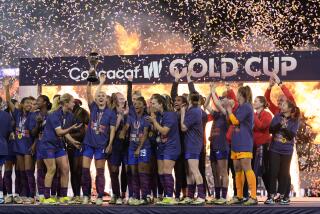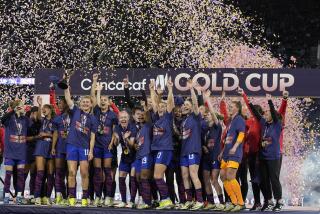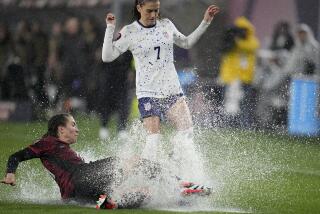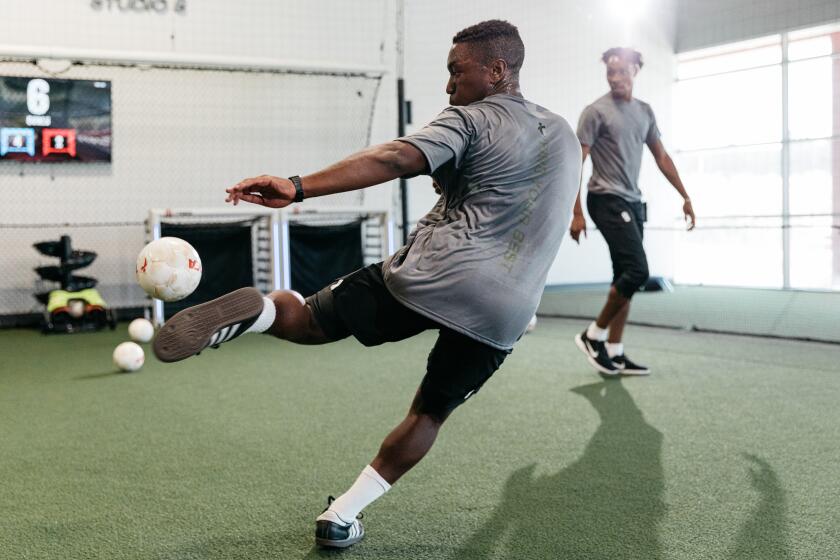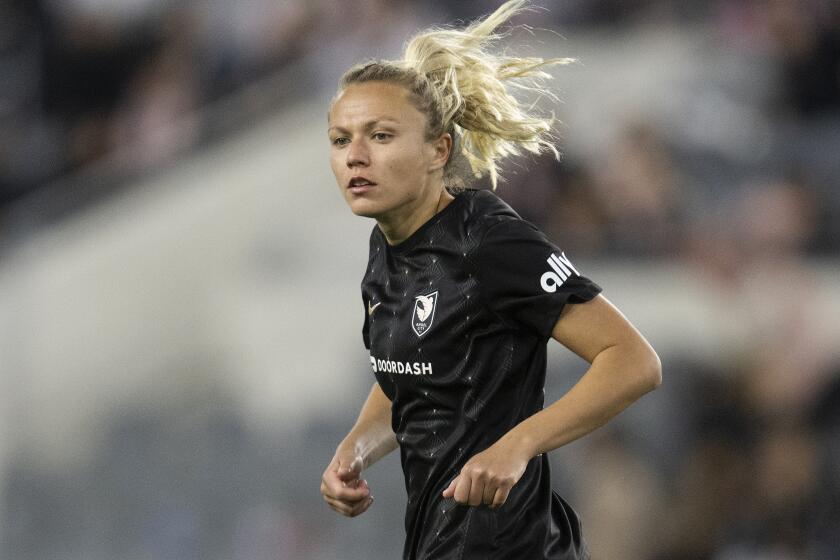Women’s World Cup: U.S. won’t mind if pitch is slick for Sweden match

“Dare to Shine,” the perky, patronizing and officially trademarked slogan of this Women’s World Cup, is splashed on everything from posters and directional signage to the big blue buses the teams are using to get around the country.
Apparently Mother Nature didn’t get the memo, though, because the skies rarely have dared to shine since the U.S. team got to France two weeks ago. In the four days the Americans have been on the Normandy coast, there has been rain, hail, thunder, lightning and heavy leaden clouds.
Very little shine.
Scattered rain is again in the forecast for Thursday, although it is expected to stop a couple of hours before the U.S. takes the field to face Sweden in the final group-play match of the tournament. And while that could leave the pitch wet and slick, U.S. coach Jill Ellis said Wednesday that would be a good thing.
“We always water the pitch,” she said. “It actually helps when you want to play fast if there’s a little rain. [But] it doesn’t matter, rain or shine. The conditions, they are what they are.
“We’re used to playing on fast surfaces. So I think it’s good.”
Let’s play two!
The U.S. used all 20 outfield players in its first two games, blasting Thailand 13-0 with its best 11, then making seven changes to its lineup and beating Chile 3-0.
Two games, two lineups, two wins. So that got some of the players to thinking: Who would win if the U.S. faced the U.S. in the final next month?
“Our trainings are so competitive we literally feel like we could enter a second team into this World Cup and they’d do quite well,” defender Crystal Dunn said. “That’s just a testament of how hungry we are to be starters. Not being a starter on our team doesn’t mean you’re actually not a good player. It just means that’s how competitive our roster is.
“We think we have literally 23 people who could start and play in this World Cup if they were on national teams.”
In some ways, Dunn said, the U.S. doesn’t have a first team and a second team — just a team.
“We trust everybody on the pitch,” she said. “We trust everybody that we brought to this World Cup. We can be dangerous. And it’s not just the starting 11.”
Cast of … well, dozens
The U.S. roster is only 23 names long, but the support staff the Americans brought to the World Cup is much bigger with a team of 33 people, ranging from coaches and analysts to trainers, massage therapists and equipment handlers, most of whom work quietly behind the scenes to meet players’ needs.
Sign up for our weekly soccer newsletter »
“We’ve got so many people,” said forward Carli Lloyd, who has seen that staff grow over the four Women’s World Cup tournaments in which she has played. “Everyone kind of chips in and is helping this team in any way possible. And it couldn’t be done without all of those people.”
Every team in France has a support staff, although the size of that staff is often limited by the financial resources of a country’s national soccer federation. Germany, for example, brought a staff of 30. Chile, the team U.S. beat Sunday, has 19 support workers. Jamaica brought 14.
kevin.baxter@latimes.com | Twitter: @kbaxter11

